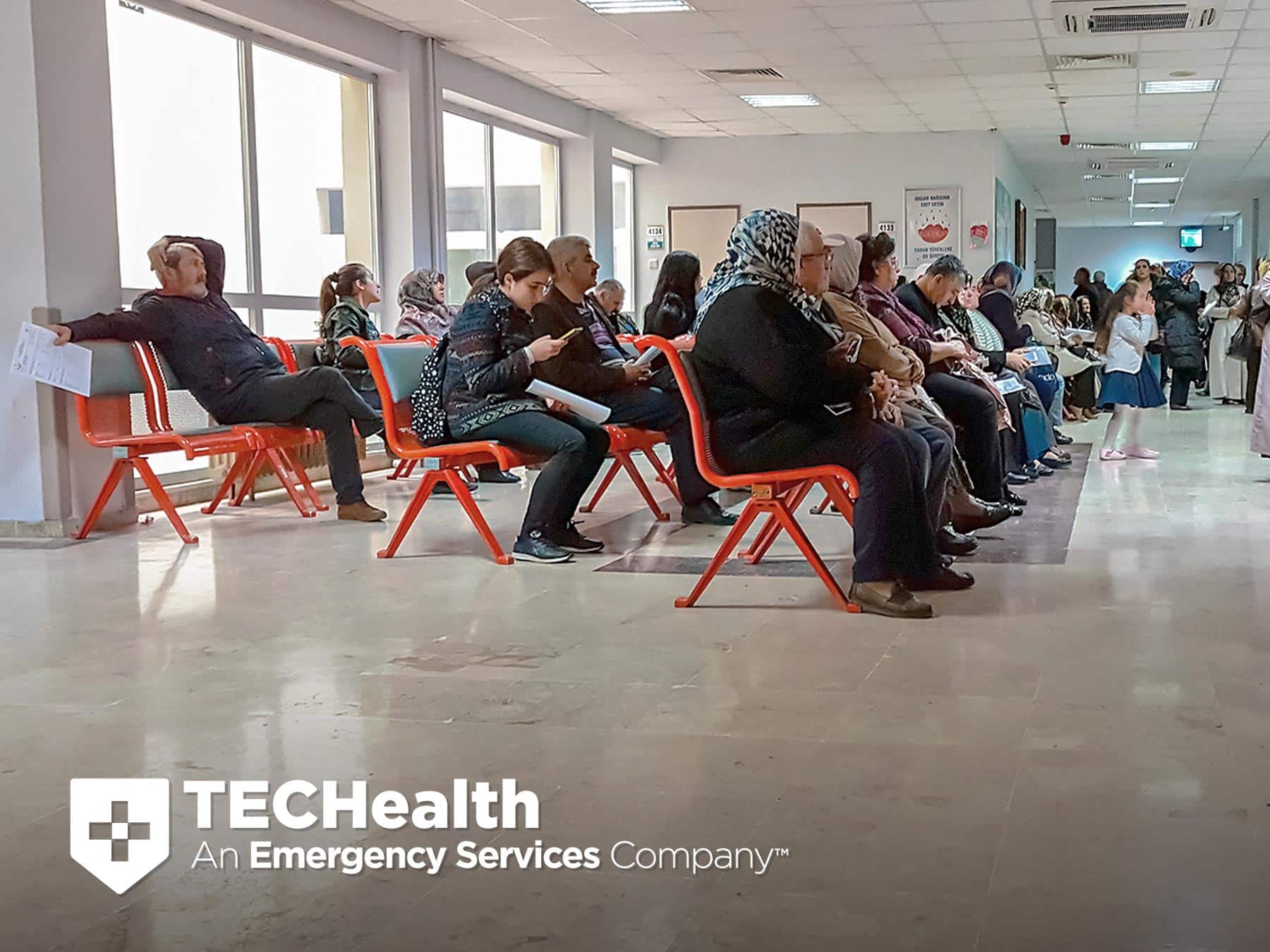The Real Reasons Behind Long Emergency Room Waits
When you’re sick or injured, the last place you want to be is stuck in a crowded waiting room. It’s no surprise that long ER wait times are one of the top complaints among patients.
Although delays happen throughout the year, they tend to get worse during the winter and early spring, when cold and flu season hits its peak. Not only does this lead to more people seeking emergency care, but it can also reduce staffing levels as healthcare workers fall ill.

Are ER Wait Times Misleading at Hospitals?
Hospitals often promote their emergency rooms with promises of short wait times. Some even feature digital clocks on billboards or outside their buildings showing real-time wait estimates. But those numbers don’t always tell the full story.
“Usually, the published wait time is the time it takes to see a medical provider,” explains Eric Wilke, MD, an ER physician and chief operations officer of TECHealth. “That just means the initial contact. Not that you’re having your treatment started in that amount of time.”
During this initial interaction, the provider is usually assessing the urgency of your condition, not diagnosing or beginning treatment. After this quick evaluation—often done by a doctor, physician assistant, or nurse practitioner—patients may be asked to wait again, sometimes for hours, depending on their condition.
A more realistic metric to look at is the total time you might spend in the ER. This can vary widely based on your location, time of day, or season. Late afternoons and evenings tend to be especially busy. According to 2024 data from the Centers for Medicare & Medicaid Services, average ER visit durations range from about 1 hour and 50 minutes in North Dakota to over 5 hours in Washington, DC.
What’s Behind the Rise in Emergency Room Wait Times?
“There are several reasons wait times in hospital emergency rooms are going up,” says Dr. Wilke. A big part of the issue boils down to simple numbers:
- Fewer ER beds available: “Every year we have more people visiting the emergency room, but at the same time, when you look at the total number of emergency room beds, those are actually going down,” he says. This decline is partly due to hospital closures and mergers, which reduce the physical space available to treat incoming patients.
- Emergency department boarding: When patients come to the ER and need to be admitted for further care or observation, they can’t always be transferred right away. If no inpatient bed is available, those patients are left waiting—often for hours or even overnight—in the ER. This backup, known as boarding, creates a bottleneck: with beds occupied by admitted patients, new arrivals have nowhere to go, leading to longer wait times for everyone.
- Shared resources: Hospital ERs often have to share key resources with other departments within the hospital. “Big hospitals have one lab. And all the lab work for patients at the hospital goes through that lab because it’s more efficient for the hospital,” explains Dr. Wilke (though he notes some ERs have limited lab capabilities). “If you send a lab from the emergency room to the hospital’s central lab, it’s put in line with everyone else who’s in the hospital, so you have to wait for the results to come back.”
The same delay can happen with certain imaging procedures, like CT scans. Hospitals may only have one imaging unit, which needs to be shared by all patients across the facility, adding another layer to the wait time.
Avoiding Long ER Waits: A Faster Emergency Care Option
Many people mistakenly confuse freestanding ERs with urgent care clinics, but they are not the same. Unlike urgent care centers, freestanding ERs like The Emergency Center are open 24/7, just like a hospital emergency room, and have the capacity to treat most of the conditions handled by traditional hospital ERs.
“I think people should realize it’s probably a 70 to 80 percent replacement of a hospital emergency room,” says Dr. Wilke about freestanding ERs. This includes treating conditions such as abdominal pain, respiratory issues, wounds, bone injuries, allergic reactions, and more.
Freestanding ERs avoid the common delays caused by issues like boarding. They also offer on-site labs, imaging, and pharmacies, providing exclusive care for their patients. This approach helps eliminate some of the major factors contributing to long waits at hospital ERs.
“Usually by the time a patient arrives and completes check-in at our registration desk,” Dr. Wilke explains, “we’re ready to put them in a room to be cared for.”
For patients who are sick or injured, a wait-free environment is an immense relief.




